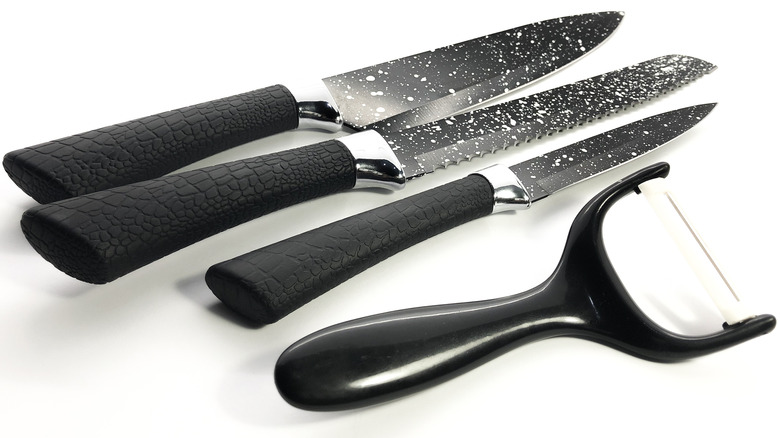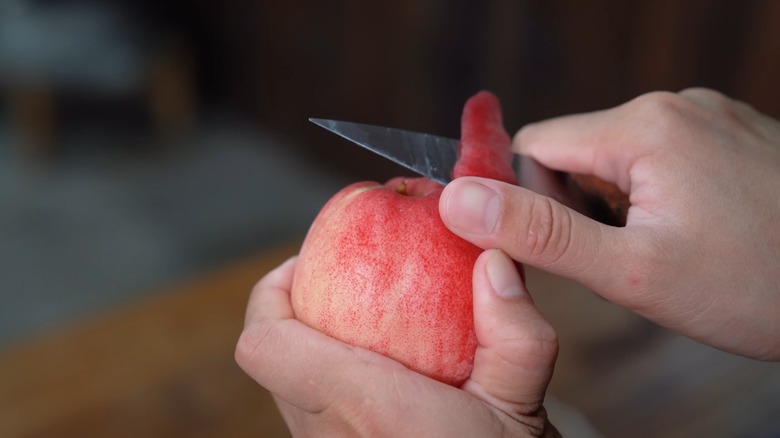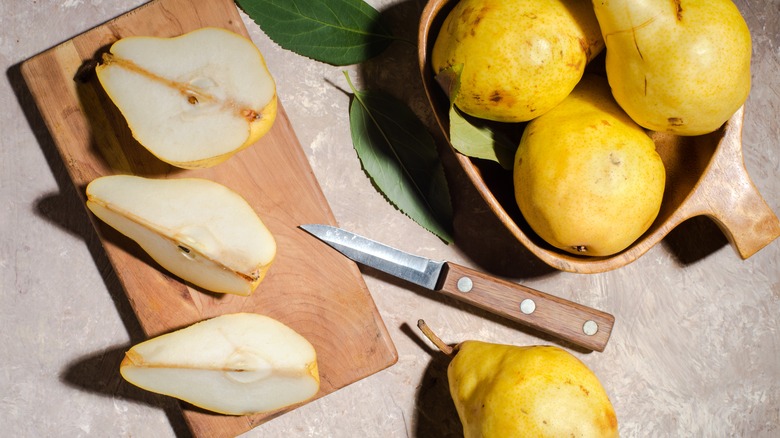When To Peel Fruits With Paring Knives Vs. Vegetable Peelers
Bringing home a variety of fruits from your grocer or produce stand is a beautiful way to deliver taste and nutrition to your meals. Many fruits are simply eaten out of hand after a good wash. But sometimes transforming those fruits into a pie, crumble, or simply cut portions for nibbling is in your plans. Most cooks will reach for a paring knife or vegetable peeler out of habit for removing the peel, but which of these tools is superior?
A paring knife is the smallest bladed knife in your set. With a comfortable handle and straight, sharp blade, this knife is designed to be used in the hand, not requiring a cutting board. The flat portion of the blade is perfect for skimming under fruit peel, and the point makes removing cores and seeds efficient without needing to change tools. Vegetable peelers come with various shaped handles and a working edge designed to create a shallow flat cut that removes peels with minimum waste. Efficient and sharp, your vegetable peeler can take on a large range of fruits with thin peels.
Texture matters
The firmness of the fruit you will peel is a primary consideration when deciding which tool to reach for. A solid fruit that does not yield to light pressure will be easiest to peel with your favorite vegetable peeler. Apples, pears, mangoes, nectarines, and even firm tomatoes are quick work. The narrow opening will be able to glide between the peel and flesh with minimum effort, following the contour of the fruit.
When the vegetable peeler needs help to get under the skin initially, you can use a quick zigzag motion to get started. By contrast, fruits with a softer texture under the peel are best tackled with a paring knife. Trying to use a vegetable peeler on a ripe peach or kiwi can result in a squishy mess as the pressure required to press through the skin mashes the delicate flesh below. Holding a paring knife in one hand and gently rotating the ripe fruit in the other at a very shallow angle will give you a beautifully peeled ripe fruit. The small blade allows precision peeling in order to remove the least amount of edible flesh.
Safety matters, too. If your soft fruit is juicy and slippery as you peel it, hold the fruit with a kitchen towel so that your knife does not slip accidentally.
Some fruits are more complicated than others
Apples, pears, and quince all have center cores that, while edible, are not generally considered delicious eating. Peeling and preparing these fruits not only requires removing the peel, but cutting out that core. When using a paring knife, you can tackle this task with just one tool, creating a more simple workflow. After slipping off the peel, the same knife can be used to cut through the fruit to remove the core and seeds and create the desired final cut as well.
The same holds for mangoes, with their large center pit and clingstone peaches and nectarines. Those tenacious pits will require cutting around to remove. Other considerations include citrus and larger-sized fruits. A vegetable peeler can create thin slices of citrus zest, but a knife is required to remove all of the pith when creating citrus segments. Larger fruits such as melons and pineapples should be peeled with a larger chef's knife. Using a small bladed paring knife would be inefficient and possibly unsafe for those large, tough peels.


